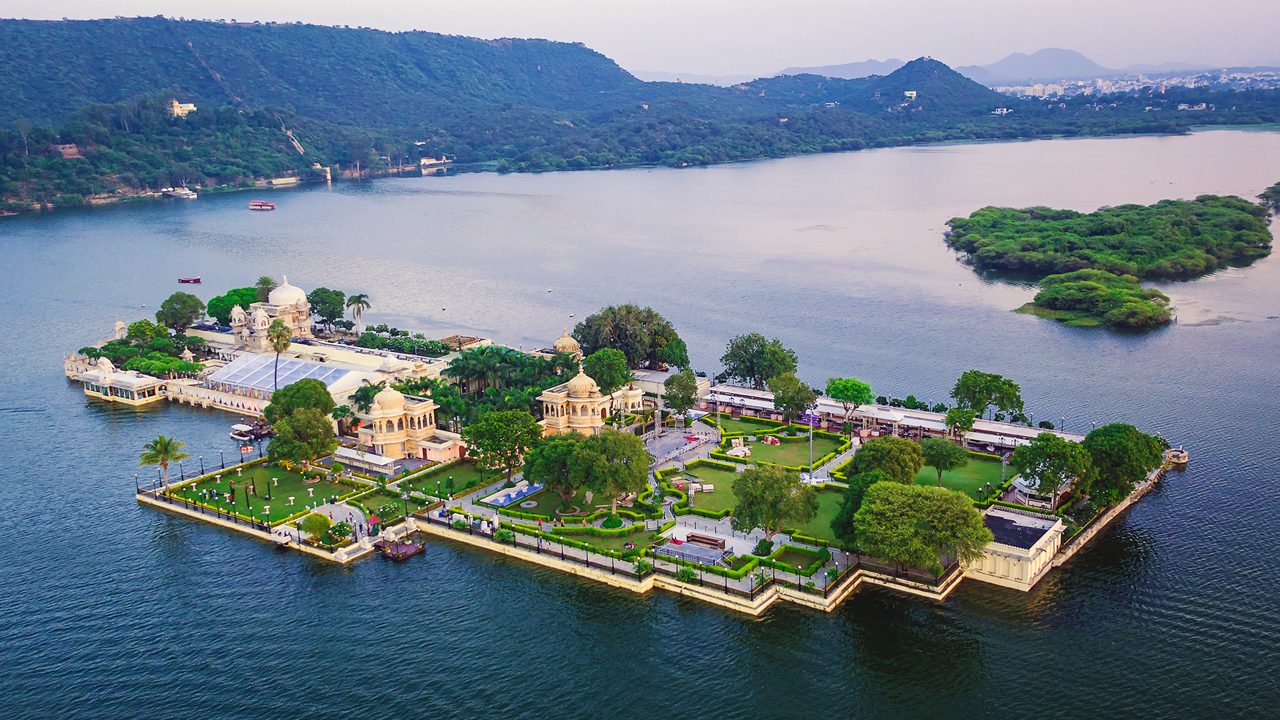When Rajasthan met Europe
The Jag Mandir Palace provides an immersive multidimensional experience that bridges history, nature, and culture. Its exquisite architecture reveals tales from its glorious past, while guided tours shed light on its deep cultural significance. As you explore its intricate workings, prepare for an engaging trip back in time.
An embodiment of cultural exchange between India and Europe, the palace blends traditional Rajasthani elements with European influences, creating an engaging ambience. While you take notice of the grand arches, intricate carvings, and graceful jalis that filter natural light, you'll observe European-influenced ornate balconies and colonnades, along with Mughal features like elaborate carvings, dome roofs and ornate arches. In addition, you'll also discover paintings, sculptures, manuscripts and jewellery that offer deep insight into India's rich past. A stunning fusion that makes its architecture unique and inspiring.
Legends within the palace
The Jag Mandir Palace is home to incredible stories and legends. One of them is the legendary tale of Prince Khurram (also known as Shah Jahan), who found shelter here during his rebellion and later built the iconic Taj Mahal inspired by its design. Furthermore, during India's first battle of independence in 1857, Maharana Swaroop Singh's heroic actions underscored its historical significance by sheltering European families who sought sanctuary within its walls. And not to forget – the grand silver screen moment of Jag Mandir Palace as one of the key settings in the 1983 James Bond movie "Octopussy", adding an extra dose of glamour to its splendid beauty.

























































